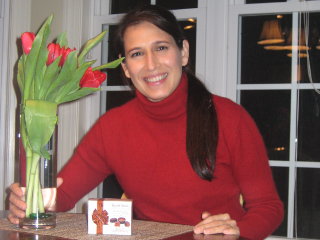Teaching Textbooks vs. Singapore Math
YEARS LATER NOTE: Since using these programs, the kids described here graduated Magna Cum Laude in Statistics (Kelly) and Summa Cum Laude with Honors in Applied Mathematics (Christian) from a large state university. At the writing of this note (June 30, 2016), they are both midway through PhD programs at national research universities here in the United States. You can read more about that here.
Audrey asked why we switched from Singapore Math to Teaching Textbooks when we went from sixth grade. First, I have to give the standard homeschool caveat that this was our experience. Different students learn and think differently. In other words, “Mileage may vary.” We did not switch immediately. We absolutely loved Singapore math for the years we used it. We had tried Saxon and found it too repetitive and boring. I think it is a very good program, but it took some of the joy out of math for our kids. We found Singapore Math when Christian was in the third grade and Kelly was in the Fifth. It worked perfectly for us. There were a lot of reasons:
- It kept the kids moving along.
- It had fun stuff like mental math.
- It was repetitive enough that the kids repeated the material enough to learn it without getting bored.
- It had a great history of success in Singapore and with homeschoolers we have known.
We went through the sixth grade with Kelly, then started the seventh grade with Singapore Math, too. It seemed like I had to spend a lot more time explaining things when we got to the seventh grade than we did in the sixth. Kelly got bored and frustrated. She began to get a distaste for math. It might well have been because we used the system wrongly. It seemed like not everything was available for the kids to really understand math at this level with the materials that were provided. I got the sense that this material would have played a lot better with a stand-up teacher than for a typical homeschool learning environment.
We had heard from other homeschoolers that Teaching Textbooks was good. I read some reviews on Teaching Textbooks. Most, but not all of them were good. We decided to try it, so I bought the Pre-Algebra material. We loved it. Kelly was fired up about math again. The program required less work on my part for correction and administration at the same time I felt I could better track whether or not she grasped the material. Here are the reasons the system worked for us:
- Each day’s material is covered redundantly in the textbook and with a lecture on a “chalkboard” via computer disk. Sometimes when one of the kids does not really understand a given subject, I can ask them whether they read the textbook or listened to the lecture. Most of the time, if they just revisit the material in the other method, that will be sufficient for them to get the understanding the need to complete the problems successfully.
- There seems to be just the amount of repetitiveness that my kids require to “own” the material. Subject matter taught in previous lessons appears in subsequent lesson problem sets for several weeks. The way the problem sets are arranged to reinforce understanding over time is one of the great strengths of this program.
- There is a set of five practice problems that go with each lesson. The student is asked to do those problems on the completion of the lecture (or reading). If the student cannot answer the practice problems correctly, it shows he needs to go back and listen to the lecture or reread the material before tackling the full daily 20-24 problem homework assignment.
- The answers to all the problems are worked in minute detail using the effective lecture/chalkboard system on the computer disk. The answers are very, very clearly explained. One of the problems with some other systems is the lack of specificity in the explanation of how to perform the homework problems. This is another great strength of Teaching Textbooks.
- The material is broken up into 12-15 units. There is a test after each unit. This helps the parent keep track of how the student performs throughout the year.
There are a couple of items about which parents should take note. First, it has been very important and helpful that I correct all the math problems for the student every night. Second, on some of the boards, a concern was expressed that the material is covered in a different order in Teaching Textbooks than in other programs. That includes both the fact that Algebra II comes before Geometry and several of the smaller subject areas are covered during different specific years for some programs than for other programs. An example of that might be that some programs introduce the sine and cosine laws in Geometry and others introduce it in Pre-Calculus. This was not a problem with us because we planned to use the Teaching Textbooks program all the way through to Pre-Calculus.
I hope that helps!
Links:

 Thanks to everyone who dropped Lorena a note on her birthday. We had a good discussion about how great it is to be enjoy the age you are as opposed to pining for a different age. We are going to celebrate a little more this weekend when we go to Tennessee. I love this picture of Lorena that we took last night with her tulips. I was quite excited to find the find a special prize from Bryan. Special for Lorena anyway. That he did it on an Apple product has to do with the fact that he wants people to think he knows something about computers, but cannot really handle a real one. Click on the YouTube link below to see his brilliant performance. Take special notice of how skinny he looks. Good job Bryan! And thanks for the great video.
Thanks to everyone who dropped Lorena a note on her birthday. We had a good discussion about how great it is to be enjoy the age you are as opposed to pining for a different age. We are going to celebrate a little more this weekend when we go to Tennessee. I love this picture of Lorena that we took last night with her tulips. I was quite excited to find the find a special prize from Bryan. Special for Lorena anyway. That he did it on an Apple product has to do with the fact that he wants people to think he knows something about computers, but cannot really handle a real one. Click on the YouTube link below to see his brilliant performance. Take special notice of how skinny he looks. Good job Bryan! And thanks for the great video.